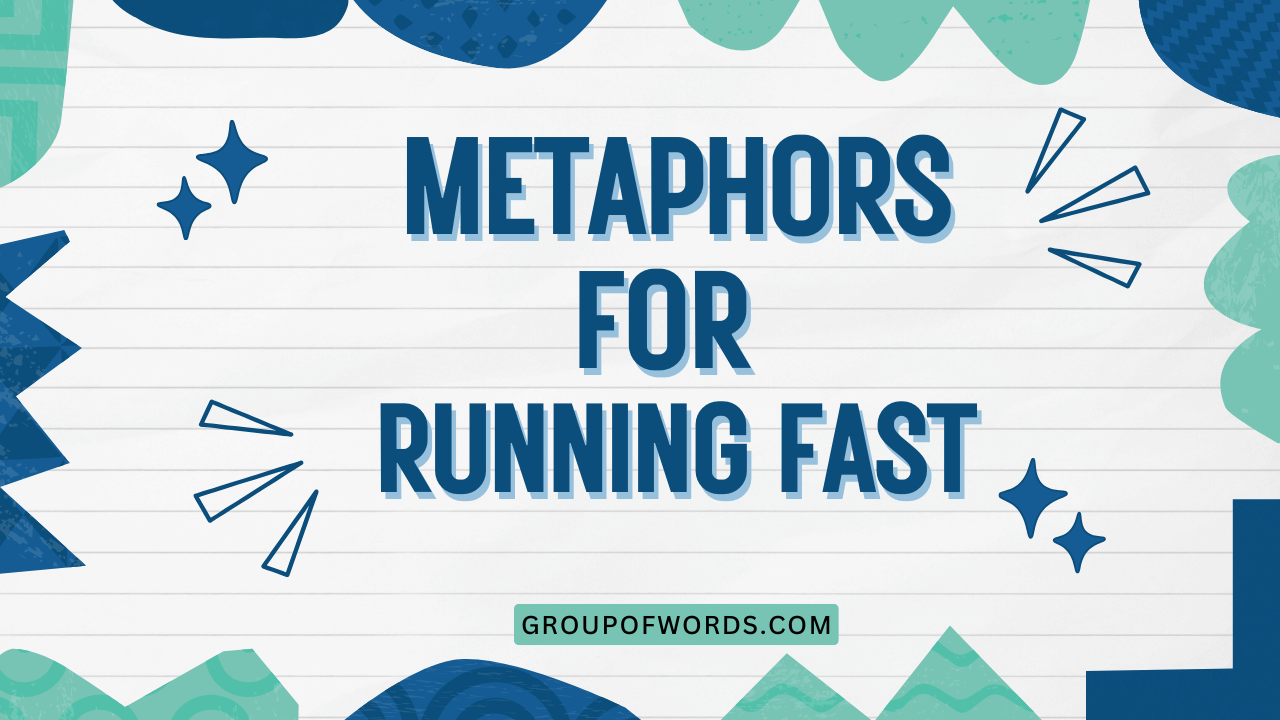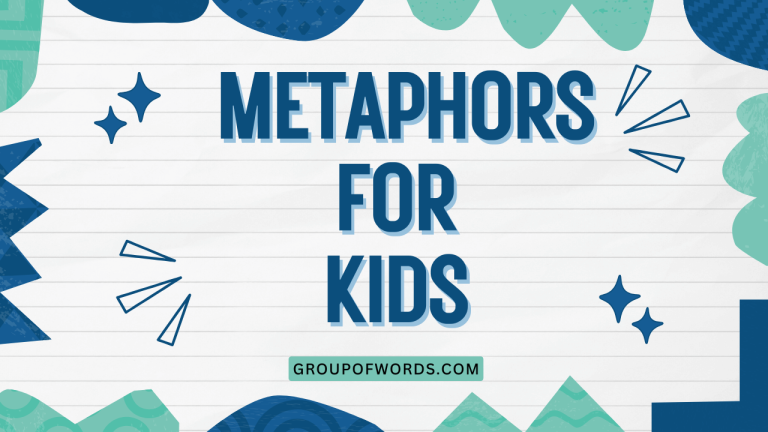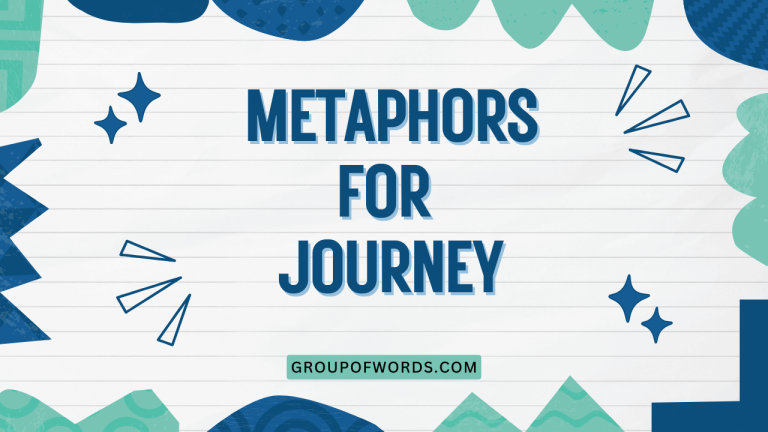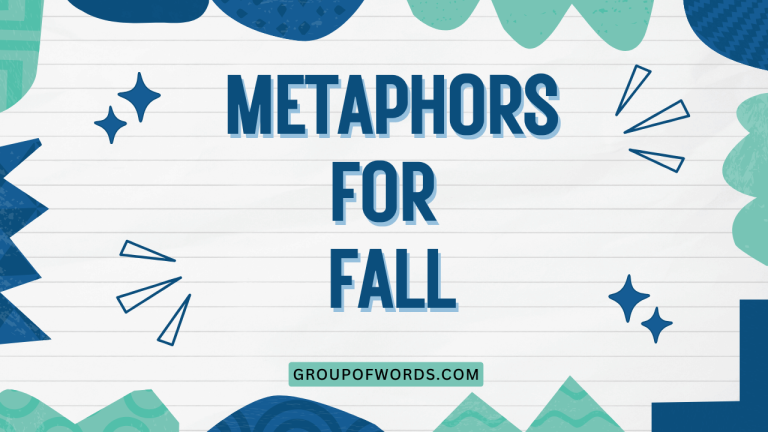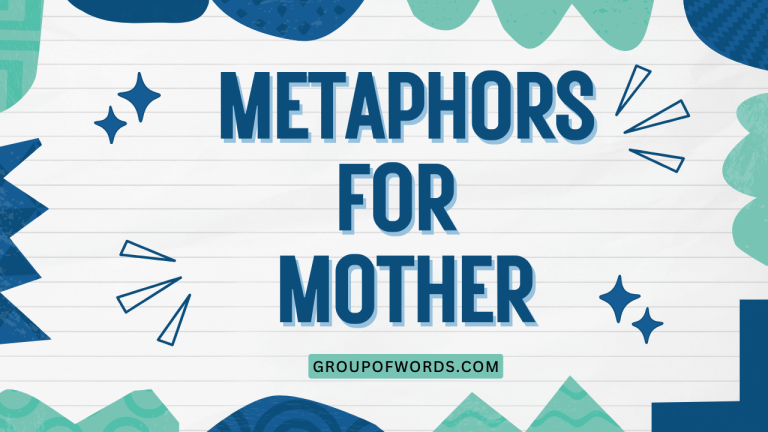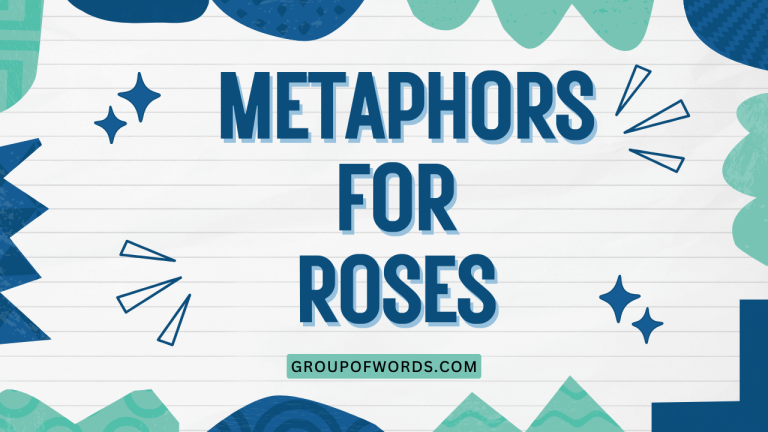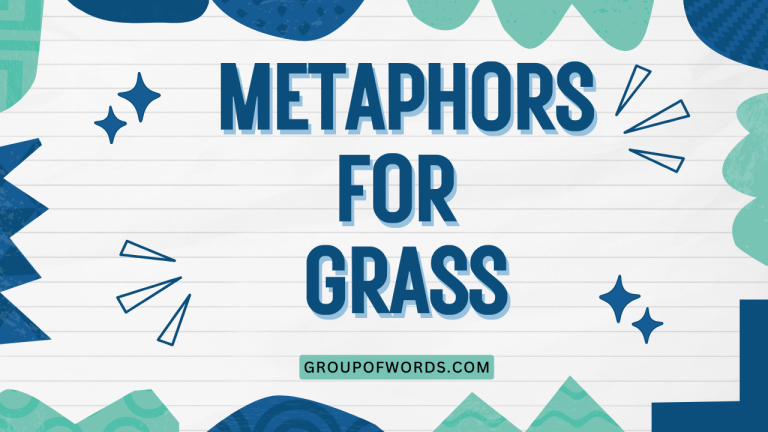Metaphors for Running Fast: A Comprehensive Guide
Understanding metaphors for running fast enriches your comprehension of English and boosts your expressive power. Metaphors offer a vivid way to describe speed and agility beyond literal terms.
This article delves into the diverse metaphors used to convey rapid movement, exploring their meanings, structures, and applications. Whether you’re an English language learner, a writer seeking to enhance your prose, or simply someone fascinated by the nuances of language, this guide will provide valuable insights and practical exercises to master this aspect of English grammar and vocabulary.
Table of Contents
- Introduction
- Definition of Metaphors for Running Fast
- Structural Breakdown of Metaphors
- Types and Categories of Running Fast Metaphors
- Examples of Metaphors for Running Fast
- Usage Rules for Metaphors
- Common Mistakes Using Metaphors
- Practice Exercises
- Advanced Topics
- Frequently Asked Questions
- Conclusion
Introduction
Metaphors are a cornerstone of figurative language, allowing us to express abstract ideas by relating them to concrete images. When describing someone running fast, metaphors move beyond simple adjectives like “quick” or “speedy,” offering colorful and evocative alternatives.
This article explores the rich tapestry of metaphors used to depict rapid running, from animal comparisons to references to inanimate objects known for their speed. By understanding and utilizing these metaphors effectively, you can significantly enhance your writing and speaking skills, adding depth and vibrancy to your descriptions.
This guide is designed for learners of all levels, from those just beginning to explore figurative language to advanced speakers looking to refine their understanding. We will break down the structure of metaphors, categorize different types, and provide numerous examples to illustrate their usage.
Furthermore, we will address common mistakes and offer practical exercises to help you confidently incorporate these metaphors into your own language. Get ready to sprint through the world of metaphors and elevate your English proficiency!
Definition of Metaphors for Running Fast
A metaphor is a figure of speech that directly compares two unrelated things without using “like” or “as.” It asserts that one thing *is* another, creating a vivid and often surprising connection in the reader’s mind. In the context of running fast, metaphors use comparisons to objects, animals, or concepts known for their speed to describe a runner’s swiftness.
These comparisons are not literal; instead, they highlight the shared characteristic of speed to create a more impactful and memorable image.
The function of metaphors for running fast is to enhance descriptive language, make writing more engaging, and convey a sense of speed and agility that simple adjectives might fail to capture. They add depth and nuance to our understanding of the runner’s pace, allowing us to visualize their movement more clearly.
Metaphors for running fast can be used in various contexts, including:
- Literature: To create vivid imagery and characterization.
- Journalism: To add flair and excitement to sports reporting.
- Everyday conversation: To express enthusiasm or exaggeration.
- Creative writing: To develop unique and imaginative descriptions.
Structural Breakdown of Metaphors
Understanding the structure of a metaphor helps in both interpreting and creating them effectively. A metaphor typically consists of two main elements: the tenor and the vehicle. The tenor is the subject being described (in this case, the runner or their speed), and the vehicle is the object or concept used to represent the tenor (e.g., a cheetah, the wind, a rocket).
The connection between the tenor and the vehicle is based on a shared characteristic or quality, known as the ground. In metaphors for running fast, the ground is always related to speed, agility, or swiftness. The metaphor works by transferring the qualities associated with the vehicle to the tenor, creating a richer and more evocative description.
For example, in the metaphor “He ran like the wind,” the tenor is “he” (the runner), the vehicle is “the wind,” and the ground is the shared quality of speed and swiftness. The metaphor suggests that the runner is moving with incredible speed and fluidity, much like the wind.
The effectiveness of a metaphor depends on the reader’s familiarity with the vehicle and their ability to recognize the connection between the tenor and the vehicle. A well-chosen metaphor can create a powerful and lasting impression, while a poorly chosen one can be confusing or ineffective.
Types and Categories of Running Fast Metaphors
Metaphors for running fast can be categorized based on the type of vehicle used. Here are some common categories:
Animal Metaphors
These metaphors compare the runner’s speed to that of fast animals. Common examples include cheetahs, horses, gazelles, and rabbits.
Animal metaphors often evoke a sense of natural speed, agility, and power.
Object Metaphors
These metaphors compare the runner’s speed to that of fast-moving objects. Examples include rockets, bullets, trains, and cars.
Object metaphors often emphasize the mechanical or technological aspect of speed, suggesting precision and efficiency.
Nature Metaphors
These metaphors compare the runner’s speed to natural phenomena known for their swiftness. Examples include the wind, lightning, a river current, and a falling star.
Nature metaphors often convey a sense of effortless speed and natural force.
Abstract Metaphors
These metaphors use abstract concepts to describe the runner’s speed. Examples include time, light, and thought.
Abstract metaphors often emphasize the intangible or mental aspect of speed, suggesting focus and determination.
Descriptive Metaphors
These metaphors describe the manner of running in a way that implies great speed, focusing on the visual or auditory experience of the runner’s movement. They don’t necessarily compare the runner to a specific object or animal, but rather paint a picture of rapid motion.
Examples of Metaphors for Running Fast
The following tables provide extensive examples of metaphors for running fast, organized by category. Each example is designed to illustrate the different ways in which metaphors can be used to describe speed and agility.
Animal Metaphors Examples
This table illustrates how different animals known for their speed can be used metaphorically to describe a runner’s pace. Each example provides a vivid image of swiftness and agility.
| Metaphor | Explanation |
|---|---|
| He ran like a cheetah, closing the gap in seconds. | Implies extreme speed and predatory focus. |
| She moved like a gazelle, graceful and swift across the field. | Suggests elegance, agility, and effortless speed. |
| The athlete bolted like a startled rabbit, leaving his opponents behind. | Conveys sudden, explosive speed and a sense of urgency. |
| He charged like a bull, unstoppable and powerful. | Suggests raw power and relentless speed. |
| She flew like a falcon, soaring past the competition. | Implies effortless speed and a bird’s-eye view of the race. |
| The sprinter darted like a hummingbird, a blur of motion. | Conveys rapid, erratic movements and incredible agility. |
| He sprinted like a greyhound, sleek and built for speed. | Suggests streamlined efficiency and pure speed. |
| She galloped like a wild horse, untamed and full of energy. | Implies unrestrained power and boundless energy. |
| The runner surged forward like a salmon swimming upstream. | Conveys determination and relentless effort against resistance. |
| He pounced like a panther, quick and decisive. | Suggests stealth, agility, and a predatory instinct. |
| She raced like a whippet, lean and incredibly fast. | Highlights a slender build optimized for speed. |
| The football player dodged defenders like a fox, cunning and quick. | Suggests cleverness and agility in evading obstacles. |
| He took off like a scalded cat, reacting instantly to the starting gun. | Implies a sudden, startled burst of speed. |
| She ran like a deer caught in headlights, panicked and fast. | Conveys a sense of fear and desperate speed. |
| The cross-country runner persevered like a mountain goat, agile and enduring. | Suggests resilience and the ability to navigate difficult terrain. |
| He moved like a water strider, barely skimming the surface. | Implies light-footedness and effortless movement. |
| She accelerated like a peregrine falcon diving for prey. | Conveys extreme speed and precision. |
| He sprinted like a jackrabbit across the desert. | Suggests agility and adaptability in a harsh environment. |
| She flowed like a dolphin through water, effortlessly fast. | Implies grace and ease in movement. |
| The marathon runner paced himself like a tortoise, slow and steady, but ultimately victorious. | Highlights endurance and consistent effort over speed bursts. |
| He ran like a roadrunner, a cartoon blur across the landscape. | Suggests comical speed and a distinctive running style. |
| She dashed like a squirrel, quick and unpredictable. | Implies nimbleness and erratic movements. |
| He charged like a rhinoceros, powerful and unstoppable. | Conveys immense strength and relentless forward motion. |
Object Metaphors Examples
This table provides examples of how fast-moving objects can be used metaphorically to describe a runner’s speed. These metaphors often emphasize the mechanical or technological aspect of speed.
| Metaphor | Explanation |
|---|---|
| He shot off like a rocket, leaving everyone in the dust. | Implies rapid acceleration and immense speed. |
| She moved like a bullet, piercing through the air with incredible velocity. | Suggests direct, unstoppable speed and precision. |
| The runner sped by like a train, a blur of motion and power. | Conveys immense momentum and relentless forward movement. |
| He raced like a Formula One car, expertly navigating the track. | Suggests precision, skill, and high-performance speed. |
| She zipped by like a motorcycle, agile and quick. | Implies maneuverability and swiftness. |
| The ball traveled like a missile, heading straight for the goal. | Conveys trajectory and unstoppable force. |
| He flew like a jet plane, soaring above the competition. | Suggests effortless speed and superiority. |
| She accelerated like a sports car, smooth and powerful. | Implies refined performance and controlled speed. |
| The puck shot across the ice like a laser beam. | Conveys focused intensity and precision. |
| He dashed like a dart, hitting the bullseye with precision. | Suggests accuracy and directness in movement. |
| She moved like a speedboat across the water, gliding effortlessly. | Implies smooth, fast movement with minimal resistance. |
| He zoomed like a drone, covering ground quickly and efficiently. | Suggests technological precision and rapid coverage. |
| She sprinted like a roller coaster, a thrilling burst of speed. | Implies excitement and exhilarating speed. |
| The car swerved like a pinball, bouncing from side to side. | Conveys erratic, unpredictable movement at speed. |
| He moved like a sewing machine needle, rapidly and precisely. | Suggests rapid, repetitive motion with accuracy. |
| She dashed like a digital signal, instantly transmitting information. | Implies instantaneous speed and efficiency. |
| He accelerated like an electric car, silently and powerfully. | Conveys smooth, quiet, and powerful acceleration. |
| She moved like a hovercraft, gliding smoothly over obstacles. | Suggests effortless movement and ability to overcome barriers. |
| The arrow flew like a guided missile, unerringly towards its target. | Implies precision, direction, and unstoppable force. |
| He sprinted like a runaway train, gathering momentum with each stride. | Suggests increasing speed and unstoppable force. |
| She zipped through the crowd like a shopping cart with a broken wheel. | Conveys chaotic speed and a lack of control. |
| He spun like a top, disorientingly fast. | Implies dizzying speed and disorientation. |
| She darted like a hummingbird, a blur of wings and motion. | Conveys rapid, erratic movements and incredible agility. |
Nature and Abstract Metaphors Examples
This table illustrates how natural phenomena and abstract concepts can be used metaphorically to describe a runner’s speed, often emphasizing the intangible aspects of swiftness.
| Metaphor | Explanation |
|---|---|
| He ran like the wind, a force of nature unleashed. | Implies unstoppable, natural speed and power. |
| She moved like lightning, striking with sudden and electrifying speed. | Suggests instantaneous speed and a shocking impact. |
| The runner flowed like a river current, effortlessly navigating the course. | Conveys smooth, continuous movement and natural grace. |
| He sped off like a falling star, a fleeting glimpse of brilliance. | Suggests rapid disappearance and exceptional talent. |
| She vanished like smoke, leaving no trace of her presence. | Implies sudden disappearance and elusive speed. |
| He moved with the speed of thought, anticipating every move. | Conveys mental quickness and strategic thinking. |
| She ran with the urgency of time itself, racing against the clock. | Suggests a relentless pursuit and the pressure of deadlines. |
| He surged forward with the force of a tsunami, overwhelming his opponents. | Implies overwhelming power and unstoppable momentum. |
| She accelerated with the intensity of sunlight, radiating energy and speed. | Conveys warmth, vitality, and radiant speed. |
| He moved with the precision of a laser beam, targeting his goal. | Suggests focused intensity and accuracy. |
| She responded with the speed of light, reacting instantly to the challenge. | Implies instantaneous reaction and unparalleled speed. |
| He flowed like molten lava, unstoppable and consuming everything in his path. | Conveys raw power and destructive speed. |
| She raced with the ferocity of a storm, unleashing her full potential. | Implies intense energy and destructive force. |
| He vanished like a mirage, a fleeting illusion of speed. | Suggests elusiveness and deceptive speed. |
| She moved with the efficiency of a well-oiled machine, perfectly synchronized. | Conveys precision, coordination, and effortless speed. |
| He took off with the explosive force of a volcano, unleashing pent-up energy. | Implies sudden, powerful release of energy. |
| She glided like a snowflake, delicate yet swift in her descent. | Suggests lightness, grace, and gentle speed. |
| He moved with the relentless rhythm of a heartbeat, steadily gaining ground. | Conveys persistence, consistency, and unwavering determination. |
| She ran as if pursued by shadows, driven by an unseen force. | Implies fear and desperate speed. |
| He moved with the grace of a dancer, blending speed and artistry. | Suggests elegance, fluidity, and artistic expression. |
| She sprinted as if time itself was chasing her. | Conveys intense pressure and urgency. |
| He ran like a dream, surreal and fleeting. | Suggests an unreal, ethereal quality to his speed. |
Usage Rules for Metaphors
Using metaphors effectively requires attention to several key rules:
- Relevance: The vehicle should be relevant to the tenor. The shared quality (the ground) should be clear and easily recognizable.
- Clarity: The metaphor should be understandable. Avoid obscure or overly complex comparisons that may confuse the reader.
- Originality: While common metaphors can be effective, strive for originality to make your writing more engaging and memorable.
- Consistency: Avoid mixing metaphors within the same sentence or paragraph. This can create a confusing and jarring effect.
- Context: Consider the context in which the metaphor is used. A metaphor that works well in one context may be inappropriate in another.
- Audience: Tailor your metaphors to your audience. Consider their background, knowledge, and cultural understanding.
Exceptions and Special Cases:
While consistency is generally recommended, skilled writers may occasionally use mixed metaphors for stylistic effect. However, this should be done sparingly and with careful consideration to avoid confusion.
Also, the use of “dead metaphors” (metaphors that have become so common that they are no longer recognized as metaphors) is generally discouraged in creative writing, but they can be acceptable in everyday conversation.
Common Mistakes Using Metaphors
Several common mistakes can undermine the effectiveness of metaphors. Here are some examples:
| Incorrect | Correct | Explanation |
|---|---|---|
| He ran like a slow turtle. | He ran like a cheetah. | The vehicle (turtle) contradicts the tenor (running fast). |
| She moved like a rock and a rocket at the same time. | She moved like a rocket. | Mixing metaphors creates confusion. |
| He ran as fast as a concept. | He ran as fast as the wind. | The vehicle (concept) is too abstract and lacks a clear connection to speed. |
| She ran like a broken record. | She spun like a broken record. | The verb should align with the image the metaphor creates. |
| He ran like the wind, but also like a snail. | He ran like the wind. | Contradictory comparisons undermine the metaphor’s impact. |
| The runner’s speed was a chair. | The runner’s speed was a lightning bolt. | The vehicle must relate to the tenor and convey the intended meaning. |
Practice Exercises
Test your understanding of metaphors for running fast with the following exercises.
Exercise 1: Identifying Metaphors
Identify the metaphor in each sentence and explain its meaning.
| Question | Answer |
|---|---|
| 1. He sprinted like a bolt of lightning. | Metaphor: “like a bolt of lightning.” Meaning: He ran with sudden, electrifying speed. |
| 2. She moved like a gazelle across the field. | Metaphor: “like a gazelle.” Meaning: She moved gracefully and swiftly. |
| 3. The runner surged forward with the force of a tsunami. | Metaphor: “with the force of a tsunami.” Meaning: The runner moved with overwhelming power and momentum. |
| 4. He took off like a rocket, leaving his competitors behind. | Metaphor: “like a rocket.” Meaning: He accelerated rapidly and achieved great speed. |
| 5. She dashed like a dart, hitting the finish line with precision. | Metaphor: “like a dart.” Meaning: She moved quickly and directly towards her goal. |
| 6. He ran like a phantom, appearing and disappearing in a flash. | Metaphor: “like a phantom.” Meaning: He moved so quickly that he was difficult to see. |
| 7. The car swerved like a pinball, careening down the road. | Metaphor: “like a pinball.” Meaning: The car moved erratically and unpredictably. |
| 8. She moved with the speed of thought, anticipating every move. | Metaphor: “with the speed of thought.” Meaning: She reacted quickly and strategically. |
| 9. He ran as if pursued by shadows, never looking back. | Metaphor: “pursued by shadows.” Meaning: He ran with great fear and determination. |
| 10. She sprinted like a runaway train, gathering momentum with each stride. | Metaphor: “like a runaway train.” Meaning: She increased her speed and became unstoppable. |
Exercise 2: Creating Metaphors
Create a metaphor for running fast using the given vehicles.
| Vehicle | Metaphor |
|---|---|
| Cheetah | He ran as fast as a cheetah chasing its prey. |
| Wind | She moved like the wind, barely touching the ground. |
| Rocket | He launched himself forward like a rocket, aiming for the finish line. |
| Lightning | She struck the track like lightning, leaving everyone in awe. |
| Bullet | The runner pierced through the air like a bullet, unstoppable and precise. |
| River | He flowed like a river, adapting to every turn on the course. |
| Arrow | She flew like an arrow, aimed directly at the target. |
| Falcon | He swooped down the hill like a falcon, gaining speed with every meter. |
| Wave | She crashed through the finish line like a wave, exhausted but triumphant. |
| Time | He ran as if racing against time itself, pushing his limits to the extreme. |
Exercise 3: Correcting Mistakes
Identify and correct the mistakes in the following metaphors.
| Incorrect | Correct |
|---|---|
| He ran like a slow snail on fire. | He ran like a cheetah on the hunt. |
| She moved with the grace of a bulldozer. | She moved with the grace of a dancer. |
| The runner was as fast as a brick wall. | The runner was as fast as a speeding bullet. |
| He ran like a turtle and a hare. | He ran like a hare. |
| She ran as fast as concrete. | She ran as fast as lightning. |
Advanced Topics
For advanced learners, exploring the nuances of extended metaphors and symbolism can further enhance their understanding. An extended metaphor is a metaphor that is developed over several lines or even an entire piece of writing.
It allows for a more complex and nuanced comparison between the tenor and the vehicle.
Symbolism involves using metaphors to represent deeper meanings or abstract concepts. For example, a runner being described as “running against the wind” might symbolize overcoming obstacles or facing adversity.
Additionally, studying the use of metaphors in different literary genres and historical periods can provide valuable insights into the cultural and social contexts that shape language.
Frequently Asked Questions
- What is the difference between a metaphor and a simile?
A metaphor directly equates two things, while a simile uses “like” or “as” to make a comparison. For example, “He is a cheetah” (metaphor) vs. “He is like a cheetah” (simile).
- Why are metaphors important in writing?
Metaphors make writing more vivid, engaging, and memorable. They add depth and nuance to descriptions, allowing readers to visualize and connect with the text on a deeper level.
- How can I improve my use of metaphors?
Read widely, pay attention to the metaphors used by skilled writers, and practice creating your own metaphors. Focus on making relevant, clear, and original comparisons.
- What is a dead metaphor?
A dead metaphor is a metaphor that has become so common that it is no longer recognized as a metaphor. Examples include “leg of a table” or “heart of the matter.”
- Is it okay to use clichés in my writing?
While clichés can be acceptable in everyday conversation, they are generally discouraged in creative writing. Strive for originality and fresh perspectives.
- How do I avoid mixed metaphors?
Pay careful attention to the images and concepts you are combining in your metaphors. Ensure that they are consistent and do not create contradictory or confusing effects.
- Can metaphors be used in technical writing?
While metaphors are more common in creative writing, they can also be used in technical writing to explain complex concepts in a more accessible way. However, clarity and precision are paramount in technical writing, so metaphors should be used sparingly and with caution.
- How do cultural differences affect the interpretation of metaphors?
Metaphors are often rooted in cultural experiences and knowledge. A metaphor that is clear and effective in one culture may be confusing or meaningless in another. It is important to be aware of cultural differences and tailor your metaphors accordingly.
Conclusion
Mastering metaphors for running fast elevates your descriptive abilities, adding richness and impact to your language. By understanding the structure, types, and usage rules of metaphors, you can confidently incorporate them into your writing and speaking.
Remember to prioritize relevance, clarity, and originality to create effective and memorable comparisons. Practice regularly with the exercises provided, and continue to explore the nuances of figurative language to refine your skills.
The journey to becoming a proficient writer and speaker involves continuous learning and experimentation. Embrace the power of metaphors to express yourself with greater creativity and precision.
As you continue to explore the world of language, remember that metaphors are not just figures of speech; they are tools that can unlock new perspectives and deepen our understanding of the world around us. Keep running with metaphors, and your language will soar to new heights!
